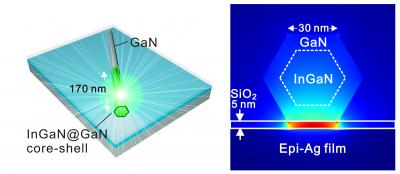World’s Smallest Laser: Gallium Nitride Nano-Scale Laser
Physicists from the University of Texas at Austin along with researchers in Taiwan and China have created the world’s smallest laser. The laser is extremely small so that it cannot seen by the naked eye. The laser is considered as a breakthrough in the photonics technology and can be used in various real time applications in medicine, computer and communications. This potential applications would result in a better standard of computer chips and sensors that could help us a lot by powering up the current level. This also could help biologically used sensors to detect disease.
The laser is made using gallium nitride on a nanoscale. The invention called, subdiffraction nanolaser, based on surface plasmon amplification by stimulated emission of radiation.
“We have developed a nanolaser device that operates well below the 3-D diffraction limit,” says Chih-Kang “Ken” Shih, physics professor at The University of Texas at Austin. “We believe our research could have a large impact on nanoscale technologies.” The researcher’s breakthrough is the first continuous-wave low threshold laser below the 3-D diffraction limit, and the laser emits a green light. The laser is constructed of a gallium nitride nano-rod that is partially filled with indium gallium nitride, which are both alloys commonly used in the production of LEDs.
This post was first published on July 30, 2012.









